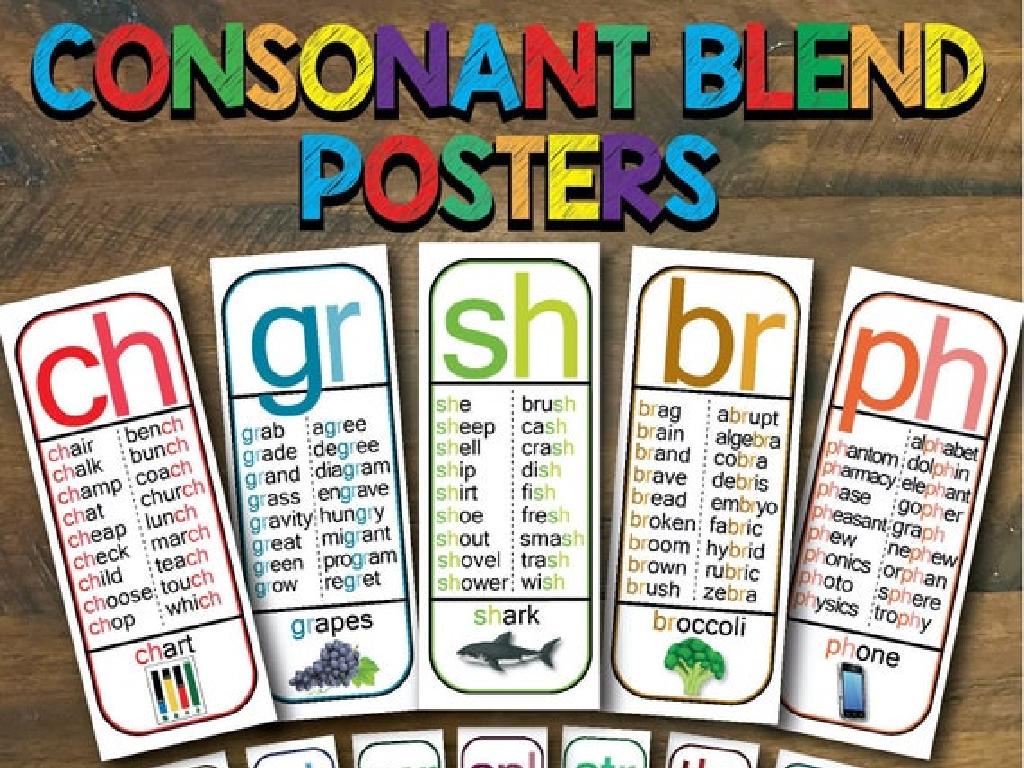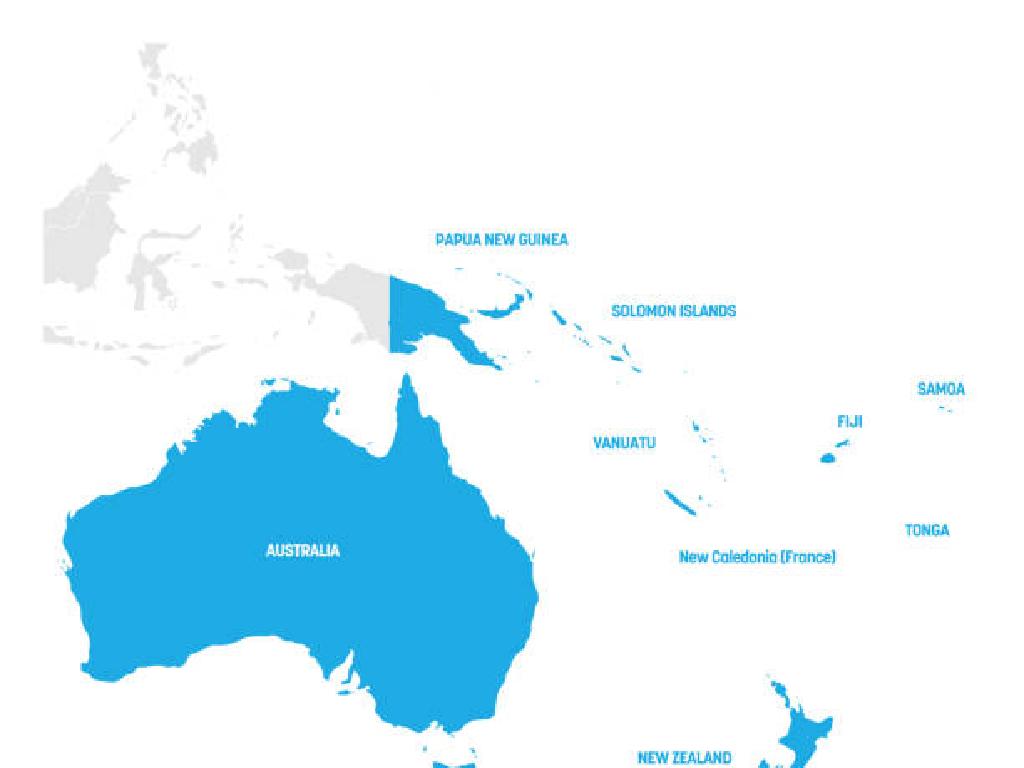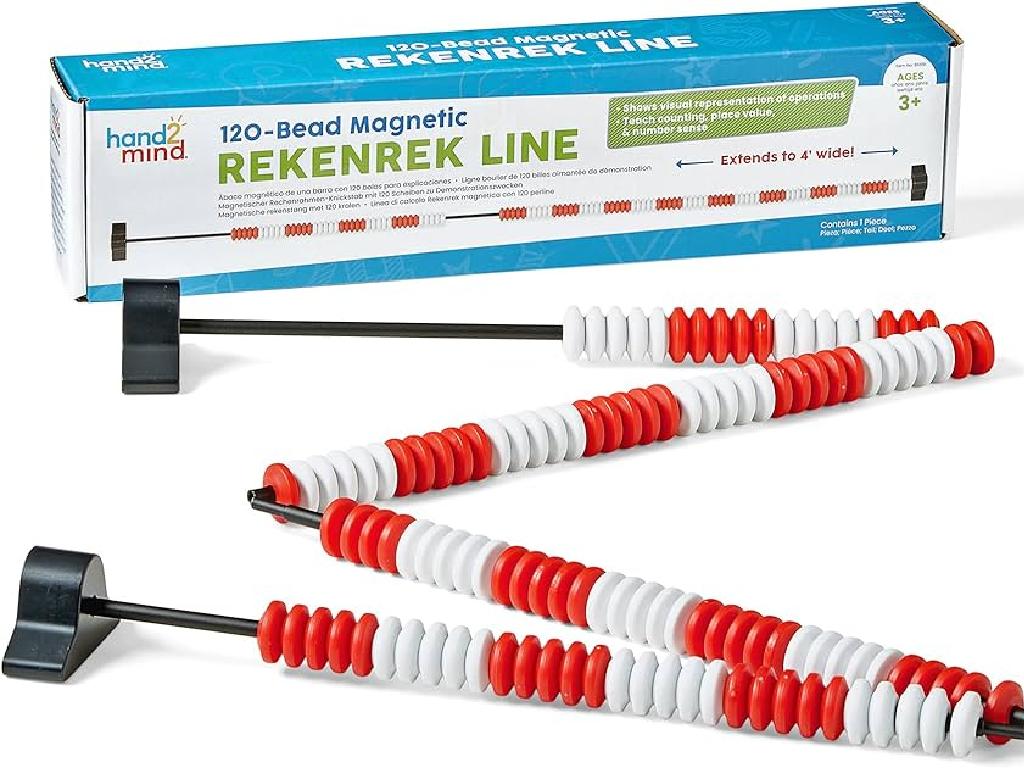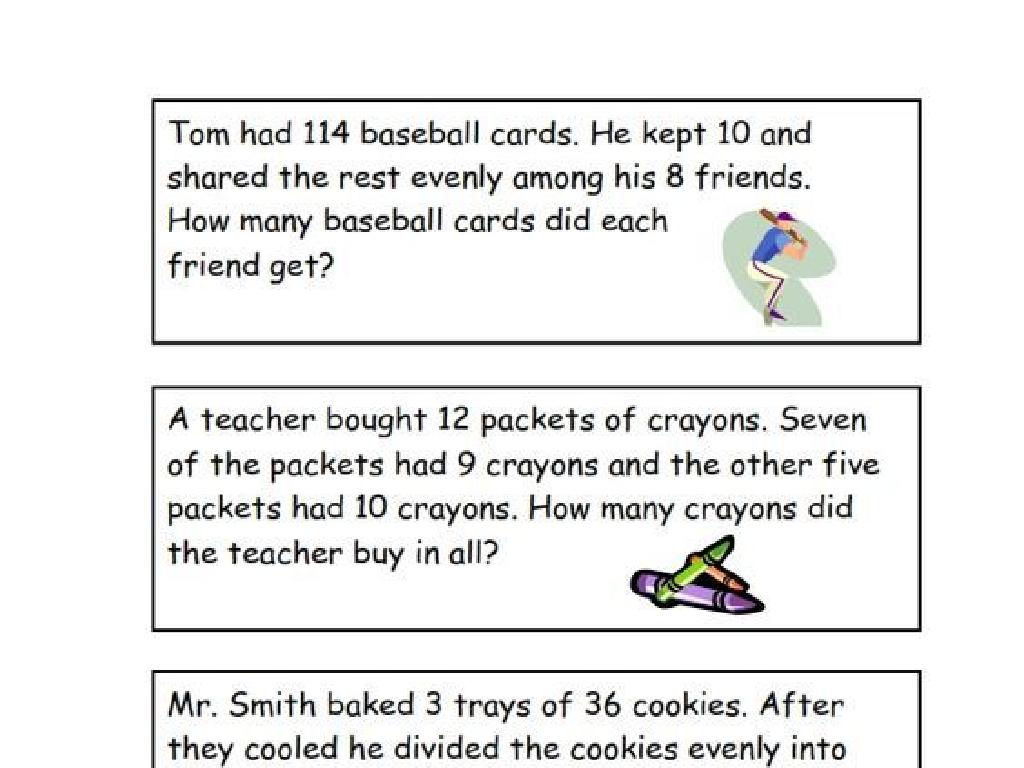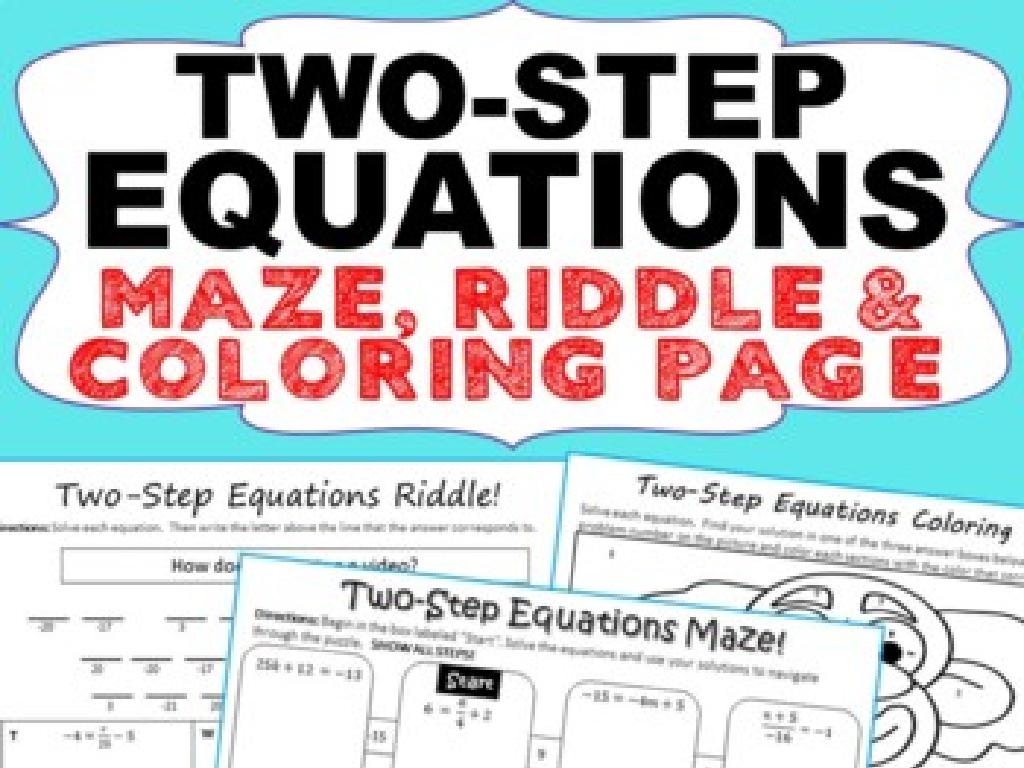Count Vertices, Edges, And Faces
Subject: Math
Grade: First grade
Topic: Three-Dimensional Shapes
Please LOG IN to download the presentation. Access is available to registered users only.
View More Content
Exploring 3D Shapes
– What are 3D shapes?
– Shapes that have length, width, and height
– Characteristics of 3D shapes
– Vertices are corners, edges are lines, faces are sides
– Daily life 3D shape examples
– Think of balls, boxes, and cans around us
– Counting vertices, edges, and faces
– Let’s count them on different shapes like cubes and pyramids
|
This slide introduces first graders to the concept of three-dimensional shapes. Begin by explaining that unlike flat shapes, 3D shapes have depth, making them solid objects they can hold and touch. Illustrate with simple examples like a ball (sphere), a box (cube), and a can (cylinder). Emphasize the parts of these shapes: vertices (corners), edges (lines where faces meet), and faces (flat surfaces). Use physical models or illustrations to show these elements and engage the students in counting them on various shapes. This will help them visualize and better understand the properties of 3D shapes in a fun and interactive way.
Meet the Shapes: 3D Wonders
– Cube: A boxy buddy
– Like dice or blocks
– Sphere: A bouncy ball
– Like a basketball or globe
– Cylinder: A can of fun
– Like a soup can or a jar
– Cone: A party hat point
– Like an ice cream cone or clown hat
– Pyramid: An Egyptian adventure
– Like the Great Pyramids or a tent
|
This slide introduces students to basic three-dimensional shapes and encourages them to connect these shapes with real-world objects. For each shape, provide examples that the students can relate to, such as a cube resembling a block or a sphere looking like a ball. This will help them to better visualize and remember the shapes. Ask the students to think of other objects that resemble these shapes to further reinforce their understanding. The goal is to make them comfortable with identifying and naming 3D shapes in a fun and interactive way.
Exploring Vertices on 3D Shapes
– What are vertices?
– Vertices are the corners of shapes where two or more edges meet.
– Counting cube vertices
– A cube has 8 corners; let’s count them together!
– Vertices are everywhere!
– Practice with different shapes
– After learning with a cube, try counting vertices on other 3D shapes.
|
This slide introduces the concept of vertices to first graders by defining them as the corners of three-dimensional shapes where edges meet. Start by showing a cube and pointing to each corner, counting them one by one to reach eight. Emphasize that vertices are not just on cubes but on all 3D shapes. Encourage students to explore their surroundings and identify vertices on various objects. As an activity, provide different 3D shapes like a pyramid, a cylinder, and a sphere, and guide the students to count the vertices on each. This hands-on activity will help solidify their understanding of vertices in a fun and interactive way.
Exploring Edges on 3D Shapes
– What are edges?
– Edges are the lines where two faces meet on a shape
– Count edges on a pyramid
– A pyramid has 8 edges to count
– Edges are like puzzle lines
– Practice with different shapes
– Try counting edges on cubes and cylinders too!
|
This slide introduces the concept of edges on three-dimensional shapes. Begin by explaining that edges are the lines where two faces of a shape meet, similar to the edges of a puzzle piece. Use a pyramid as an example and guide the students to count its edges together. Emphasize that edges are straight and can be counted visually or by touch. After the pyramid example, encourage students to practice counting edges on other shapes like cubes and cylinders to reinforce the concept. Provide physical models if possible for a hands-on experience. This activity will help students recognize and count edges, which is a fundamental skill in understanding the properties of three-dimensional shapes.
Exploring Faces of 3D Shapes
– What are faces on 3D shapes?
– Count faces on a cylinder
– A cylinder has 2 circular faces
– Faces are flat surfaces
– Practice with different shapes
– How many faces does a cube have?
|
This slide introduces the concept of faces on three-dimensional shapes to first-grade students. Begin by explaining that faces are the flat surfaces that make up the sides of a 3D shape. Use a cylinder as an example and guide the students to count its faces, which are two circles. Emphasize that faces are always flat and never curved. After explaining, engage the students in a hands-on activity where they can practice counting faces on various 3D shapes, such as cubes, cones, and spheres. Encourage them to touch and count the faces on physical models of the shapes if available. This tactile experience will help solidify their understanding of the concept.
Exploring 3D Shapes: Counting Vertices, Edges, and Faces
– Practice counting on 3D shapes
– Use blocks for counting
– Blocks make it easier to see and count
– Count vertices (corners)
– Vertices are where two or more edges meet
– Count edges and faces
– Edges are the lines where faces meet; faces are the flat surfaces
|
This slide introduces first graders to the concept of counting vertices, edges, and faces on three-dimensional shapes. Using blocks as a tangible example, students can physically count these elements, which helps in understanding the geometry of 3D shapes. Teachers should demonstrate counting on a few shapes first, then let students try with their own blocks. Encourage them to touch each vertex, edge, and face as they count. Prepare to have a variety of shapes available for students to explore, and consider pairing students up for collaborative learning. The goal is to make them comfortable with the terminology and the counting process.
Shape Matching Game: Vertices, Edges, and Faces
– Match shapes with vertices, edges, and faces
– Work with a partner on this activity
– Find all the correct matches together
– Have fun learning about 3D shapes!
|
This slide introduces a class activity designed to help first graders learn about the properties of three-dimensional shapes in a fun and interactive way. The matching game requires students to work in pairs to match various 3D shapes with cards that list the correct number of vertices, edges, and faces for each shape. Teachers should prepare sets of 3D shape models or pictures along with cards that have the corresponding properties written on them. Possible shapes to include are cubes, cones, cylinders, and pyramids. Teachers should guide the students through the activity, ensuring they understand the terms vertices (corners), edges (lines where two faces meet), and faces (flat surfaces). After the activity, discuss the matches as a class to reinforce the concepts.
Create Your Own 3D Shape!
– Make a 3D shape with playdough
– Count all the vertices (corners)
– Points where two or more edges meet
– Count all the edges (lines)
– Straight lines where two faces connect
– Count all the faces (flat surfaces)
– Flat surfaces that form the shape
|
This activity is designed to help first graders understand the properties of three-dimensional shapes by creating them with playdough. Encourage the students to mold various shapes like cubes, pyramids, or cylinders. Guide them to identify and count the vertices, which are the corners of the shape; the edges, which are the lines where two faces meet; and the faces, which are the flat surfaces. Provide examples like ‘A cube has 8 vertices, 12 edges, and 6 faces.’ Offer assistance as needed and ensure that each student can differentiate between vertices, edges, and faces. This hands-on activity will reinforce their understanding of 3D shapes and their properties.
Class Activity: Shape Hunt Adventure
– Explore the classroom on a shape hunt
– Match objects to 3D shapes we know
– Draw the shapes and their features
– Sketch the cube, sphere, or cylinder you find
– Count vertices, edges, and faces
– Remember: vertices are corners, edges are lines, and faces are surfaces
|
This interactive activity is designed to help first graders apply their knowledge of three-dimensional shapes by exploring their environment. Encourage students to look for cubes, spheres, cylinders, and other 3D shapes around the classroom. Provide them with drawing materials to sketch the shapes they find. Guide them to identify and count each shape’s vertices (corners), edges (lines), and faces (flat surfaces). This hands-on experience reinforces their understanding of geometric concepts in a fun and engaging way. Possible variations of the activity could include a shape scavenger hunt, creating shapes with clay, or using building blocks to construct shapes and identify their features.
Review and Goodbye: 3D Shapes
– Recap: 3D shapes and their parts
– Find a 3D shape at home
– Look for any 3D object like a box or a ball
– Describe its vertices, edges, and faces
– Count the corners (vertices), sides (edges), and flat surfaces (faces)
– Share what you learned with family
– Teach your family about 3D shapes using your object
|
Today’s lesson focused on the basic components of three-dimensional shapes. We learned that vertices are the corners of a shape, edges are the lines where two faces meet, and faces are the flat surfaces. For homework, students are encouraged to find a 3D shape around their home, such as a cereal box or a soccer ball, and identify its vertices, edges, and faces. They should then explain these components to their family members, reinforcing their understanding of the concepts. This activity will help solidify their learning and give them the opportunity to teach others, which can be a powerful learning tool for young students.

